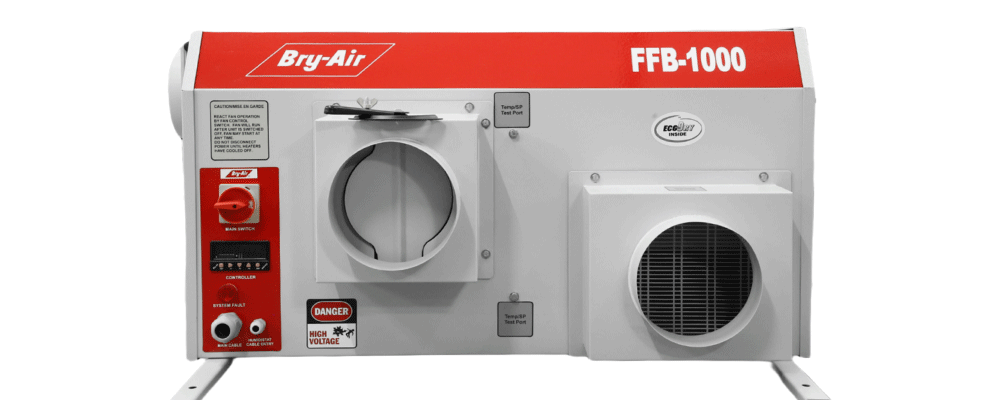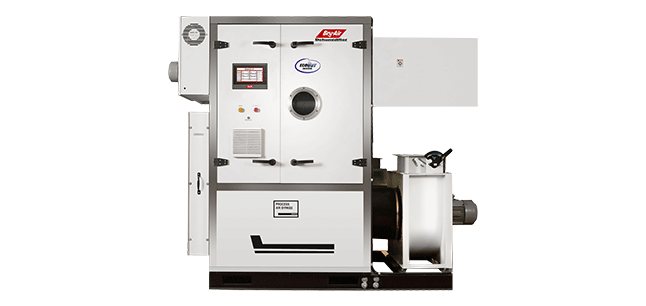A variety of seeds are commonly stored for consumption or processing in future. The primary concern in such storage is to protect the seed from damage by fire, water, insects, and rodents. However, seeds must also be preserved for sowing at a later date or for genetic experiments. When stored for such purposes, the seeds must also be protected from loss in germination potential.
Due to improper drying and storage conditions, seeds suffer from major retarding effects. These are:
Therefore, seed conservation through efficient processing and storage becomes factor of prime importance. Proper drying limits the subsequent rate of seed deterioration during long-term storage.
Three important factors determine the shelf-life of seeds:
After the seeds are dried, the next phase is their safe storage. Safe storage of seeds is important for a variety of reasons. They must be preserved for use as human and animal food, and for planting. Seed viability must also be protected for various uses (germplasm protection) by the plant scientist who maintains a permanent reservoir of seed stock by establishing a seed bank.
Seed storage is the maintenance of high seed germination and vigour from harvest until planting. The purpose of seed storage is to maintain the seed in good physical and physiological condition from the time they are harvested until the time they are planted. Seeds have to be stored, of course, because there is usually a period of time between harvest and planting. During this period, the seeds have to be kept somewhere.
Seed suppliers are not always able to market all the seeds they produce during the following planting season. In many cases, the unsold seeds are ‘carried over’ in storage for marketing during the second planting season after harvest. Problems arise in connection with carryover storage of seeds because some varieties and lots of seeds do not carryover very well.
Storage conditions depend on projected use of seed. Seed Storage has certain requirements which include protection from water, contamination, rodents, fungi etc. Additionally, controlling relative humidity and seed storage temperature is vital. The two are interrelated. Interestingly, for short term storage, their relationship can be expressed by a simple rule of thumb. Storage temperature (in °F) plus relative humidity should total 100.
For achieving the controlled air requirement, refrigeration, offers a direct, simple and economic solution to control both temperature and relative humidity to the specified level.
Bry-Air Dehumidifiers for moisture removal and humidity control, in conjunction with refrigeration equipment for sensible cooling and temperature control, are being used extensively by leading seed processors worldwide. Thus, preserving the basic element of nature, the perpetuator of life … SEED.
The amount of moisture present in the seeds affect both the quality and storability of the seeds during long term storage. Generally, drying seeds to 4-6% moisture content on wet basis decelerates the rate of seed deterioration exorbitantly.
Seeds cannot be dried by exposing them to heated air as elevated temperatures will destroy their germination potential. The alternative is to release the moisture from the product to the surrounding air. The dryer by maintaining the air at a lower moisture level can increase the drying rate. Moreover it removes the variability of weather as a factor in a drying operation.
The dehumidifying seed dryer uses the following principle. The seed dryer essentially consists of two parts: the first is a chamber fitted with perforated trays which vary with the quantity of seeds to be dried and also the size of the equipment.
On top is housed the second part- the dehumidifying dryer, which continuously feeds dry air into the chambers. The removal of moisture is based on the principle of physical adsorption. Through experience, it is found that to optimise drying capacity with minimum power consumption and to retain germination potential in the seed, the air coming out from the dry chamber should be at a temperature of 100°F and 5% RH.
These seed dryers are based on state-of-the-art technology and incorporate a unique air distribution pattern through the trayers to optimize drying capacity and time.
Seed Drying:
Seed Storage:

The powder coated, CNC fabricated compact desiccant dehumidifiers (FFB series 170-4500 CMH) are lightweight and can be installed above the false ceiling.

For complete air handling and environment control needs (ranging from 2,500 CMH to 25,000 CMH)





